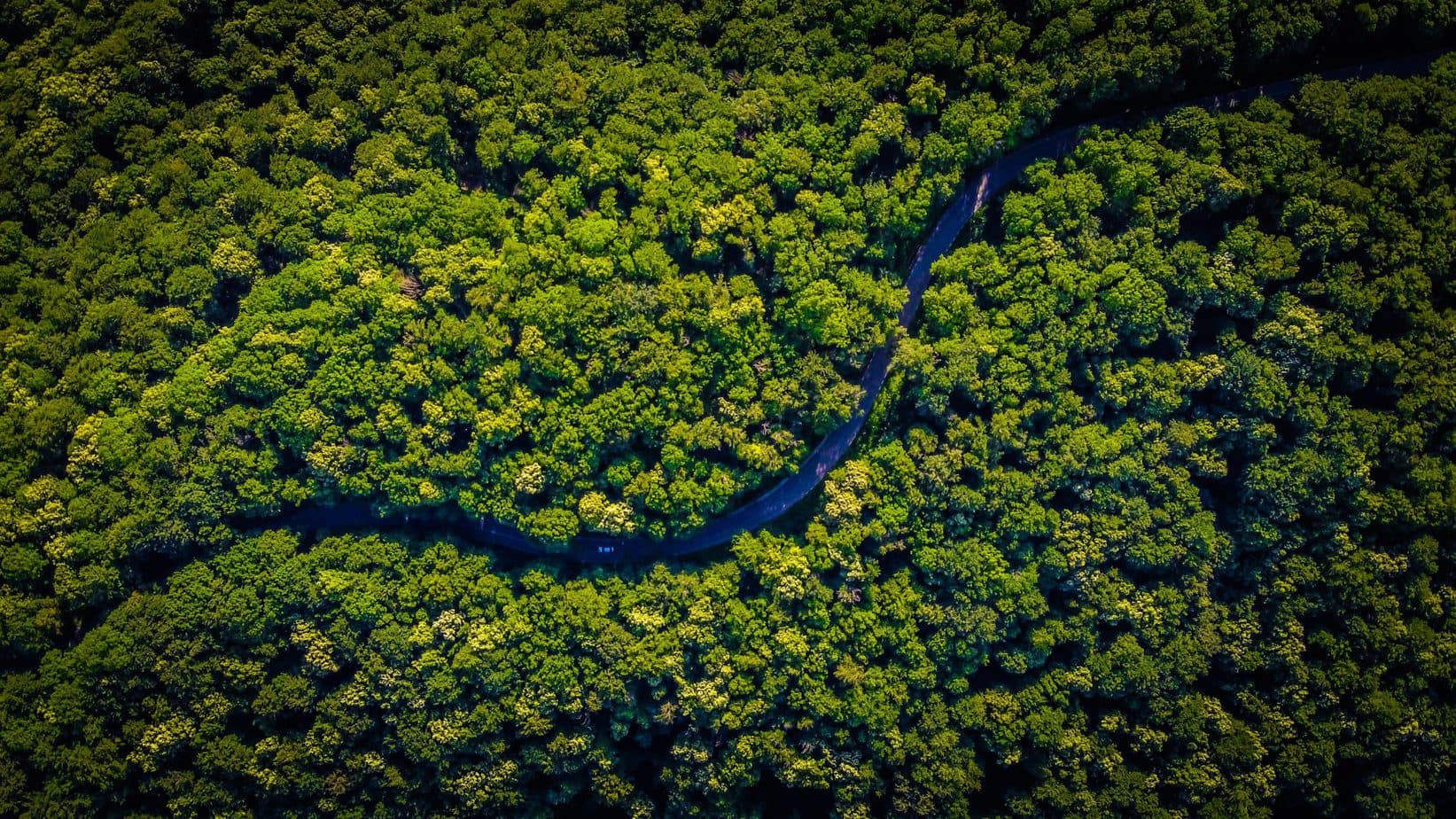*This article was created with the help of Alessandra Souroujon from ClimateSeed.
Who hasn’t heard of reducing carbon emissions by now, has been living under a rock for the past 6 years.
According to the Paris Agreement, we have to halve our carbon footprint by 2030 and become completely carbon neutral in 2050. Over the last couple of years, many companies have taken all kinds of action to measure and reduce their carbon footprint.
What’s carbon offsetting again?
Carbon offsetting entails that in order to go beyond a reduction strategy, companies can purchase carbon credits* to account for their own residual emissions. The purchase of these carbon credits by companies finances- and supports projects around the world that either capture or avoid CO2 emissions.
*A carbon credit is a permit that allows the company that holds it to emit a certain amount of carbon dioxide or other greenhouse gases. One credit permits the emission of a mass equal to one ton of carbon dioxide.
In short: by purchasing carbon credits you are contributing to projects that not only have carbon benefits. But also social and environmental co-benefits that target the Sustainable Development Goals (SDGs) set by the United Nations.
Examples of carbon offsetting projects can be; renewable energy projects, energy-efficiency improvements, carbon-capturing technologies, or reforestation and forest conservation.
Carbon offsetting is very trendy.
This trend seems obvious because carbon offsetting projects offer a relatively fast and cost-effective solution to account for your residual carbon footprint. They are here to help you combat global climate change and often reduce greenhouse gas emissions at a faster pace than you- as a single organization- can do. As cherry on top these projects often also have a large positive social impact as well through providing jobs and social empowerment.
Almost sounds too good to be true… And it is- if you don’t do it properly.
*Note: in carbon offsetting, you are not an owner of a certain product. You are only financing certain products or solutions that reduce carbon emissions.
Is carbon offsetting the solution to our climate crisis?
Carbon offsetting is a solution for battling our climate crisis, but not the solution.
The thing with carbon offsets is- they only work if the company financing them also changes its own operations to become more sustainable. Because tracing effective carbon offsetting can be difficult.
First, it’s hard to check or assess the permanence of carbon savings and how these savings could potentially change/turn out in the long run. Second, it can be hard to calculate the precise added value of a carbon offsetting project (e.g. planted trees or cleaner cooking stoves). As it’s hard to analyze and calculate what would have happened without the said project.
Measuring before offsetting
At Ecochain we firmly believe that organizations first need to measure and reduce their CO2 as much as possible. And offset their remaining, most unavoidable emissions.
We’re not the only ones. According to the multidisciplinary team from the University of Oxford, there are four key elements to credible net-zero aligned offsetting:
- Prioritize reducing your own emissions first, ensure the environmental integrity of any offsets used, and disclose how offsets are used.
- Shift offsetting towards carbon removal, where offsets directly remove carbon from the atmosphere;
- Shift offsetting towards long-lived storage, which removes carbon from the atmosphere permanently or almost permanently; and
- Support for the development of a market for net-zero aligned offsets.
A real-life example of points 2 and 3, is capturing and storing your remaining carbon emissions through direct air capture technology. One of these organizations that removes carbon from the air is Climeworks.
Click on the button below to learn more about how to effectively measure your carbon footprint and reduce it.
But of course, every bit helps. And carbon offsetting can be a legitimate way to support us in facing the climate crisis. So how can you make sure you are prepared?

How to make sure your carbon offset is credible.
In order to make sure that you are investing in a credible carbon offset project or program, there are a couple of do’s and dont’s you should keep in mind:
1. Make sure the carbon offset project fits your business.
This might seem straightforward, but should definitely not be overlooked. Make sure the carbon offset project fits your business. For example, if you specialize in making pots and pans- try to search for a carbon offsetting project that invests in sustainable, clean cookstoves. This will help create a clear alignment between the choice for the carbon offsetting project and your own company. Helping yourself as well as your important stakeholders to make sense of your offsetting decisions.
2. Always look at the standards involved in the carbon offset.
There are two types of offset markets. (1) The compliance and (2) voluntary offset markets. The compliance market involves legally binding caps on carbon schemes such as the EU’s carbon trading system. However, the voluntary market offers carbon offsets for the private sector; carbon offsets for companies and individuals.
The voluntary offset market has developed a couple of standards in order to verify the quality of carbon offsetting projects. These standards include the Voluntary Gold Standard (VGS) and the Voluntary Carbon Standard (VCS). Offsets with these two standards offer the buyer extra credibility and should assure that you’re buying a project that actually makes a difference (it’s additional) and is checked continuously on the actual reductions it achieved.
You can read everything about global carbon markets in the ultimate guide to global offsetting by the Carbon Market Watch, right here.
3. Always analyze a carbon offset’s duration and permanence.
When searching for offsetting projects, make sure to ask yourself the question: does this project really lead to permanent savings?
If you want to have the biggest impact over time, you need to ensure your offsetting project will continue for the years to come. Think of reforestation: it can decrease the overall concentration of greenhouse gases in the atmosphere. However, you can’t really guarantee the health of the trees or how long they will live/their longevity and capture carbon over time- can you? So, be sure to ask carbon offset projects on how they tackle their duration and permanence.
4. Be critical: is the project really making a difference? Is it ‘additional’?
Make sure that your project is actually initiated to making a difference regarding the reduction of carbon. Is the project’s primary purpose to reduce greenhouse gas emissions? Or is it an existing project that was going to happen anyway- regardless of your investment?
5. Is your project just ‘moving’ a problem?
It could be that your project is ‘leaking’ and could actually increase the production of greenhouse gas emissions somewhere nearby. Think of projects that aim to preserve rainforests. Will logging companies just simply move a bit more south and start logging there?
6. Request transparency on the price and the specific operation of the carbon offset.
Transparency is incredibly important when it comes to assessing the quality and price of carbon offsets. The Voluntary Carbon Market is often unregulated. There is a large supply of carbon credits, which has pushed down a lot of the prices of carbon offsets.
Generally, the price of a carbon credit does not reflect the actual costs of reducing that tonne of CO₂. The price of carbon credits is affected by project location, the project typology, the project’s size, and its co-benefits. Some projects can be cheaper due to how large they are and therefore, have low operating costs (think of renewable energy projects).
High carbon pricing
If a carbon offset has a higher price, this is often due to qualitative aspects of a project. Think of social impact or nature preservation- aspects that require more land or labor costs. Carbon offset prices can range from large-scale sustainable energy projects with just 1 euro. To up to 20 euros for, for example, small-scale cookstove projects or reforestation. However, it’s good to keep in mind that prices can also be high because brokers sometimes take larger margins.
Always request transparency on the price of your carbon credits and what this price reflects. You can a full explanation on carbon credits right here.
7. Be critical of how the carbon offset is going to be measured.
Just as you should be critical of the aspects mentioned above. You should also ask yourself if the measurement of your carbon offset is going to be accurate and transparently reported. It’s the same as measuring your own emissions. You want clear data and numbers that show the carbon reduction in the atmosphere as a result of buying your carbon offsets.
Each carbon credit has a serial number, and if it doesn’t have one it cannot be resold. So, make sure your carbon credit has a serial number, and that its carbon reduction is monitored and tracked accordingly. If this is not done properly- they cannot be retired in the market registries and claimed as actual carbon offsets.
8. Consider if you want to purchase local or national/international projects.
When it comes to carbon offsetting projects, you have local as well as national or international projects. Most people think of reforestation and forest conservation projects in the Amazon. However, there are local initiatives you can support as well. If you purchase local offsets, you will of course support a project that is close to home. This could also potentially contribute to your local economy.
Conclusion
Carbon offsets can have a positive effect if they are used appropriately. Our advice remains to first reduce your own emissions as much as possible before you start considering carbon offsets.
And if you are buying a carbon offset, make sure that: the offset credit is credible, permanent, additional, and verified by the voluntary market standards.


